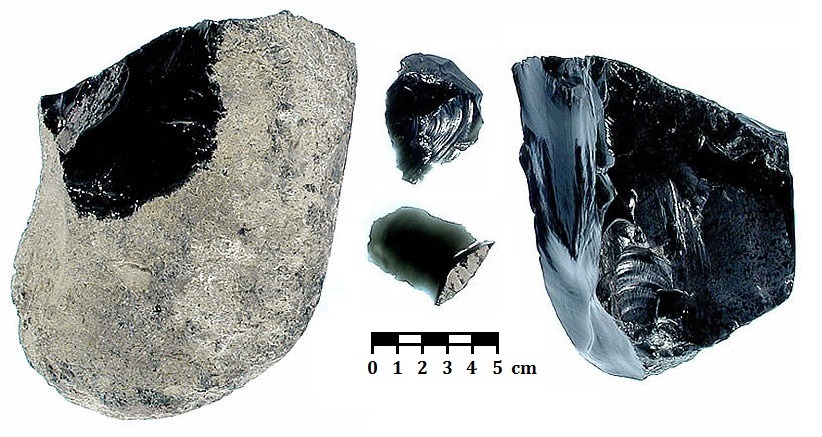Attention!!!
A General Meeting and Presentation are planned by the Hill Country Archeological Association for Saturday, November 21, at 1:00 pm.
This will be a Zoom Meeting with Dr. Chris Lintz as Speaker!
We will not be meeting in Kerrville due to COVID19!
We have a great speaker on obsidian found at prehistoric site 41PT519 in Potter County, Texas. He will also discuss the sources for more than 1500 cultural obsidian finds from across the Southern Plains.
We invite you to this Zoom Meeting. We also will be taking nominations from you for our 2021 Board of Directors. The Nominating Committee will report on a recommended slate of nominees. The nominees are: Mike McBride, President; Terry Farley, Vice President; Paul Unger, Treasurer; Susan Clark, Secretary; Karen Mortiz, Communications Director; and Francoise Wilson and Rick Barrier, At-Large Directors. We will accept nominations from members during the meeting. The 2021 board will be voted on at the new Board in January 2021.
The Zoom Meeting “Doors” will open at 12:00 pm so you can log on to the meeting and greet old friends.
The meeting will start at 1:00 pm as usual.
Here is your Zoom Meeting Link to the meeting:
https://us02web.zoom.us/j/81502314733?pwd=d0t0TENjbEtFRzZmSFAyQ3pXcyswZz09
Meeting ID: 815 0231 4733
Passcode: 230824
Presentation Title:
Surface Reconnaissance of 41PT519 with Source Identification and Regional Context of Its Obsidian, Potter County, Texas
Speaker & Co-Authors:
Christopher Lintz, Arlo McKee, Becky Shelton and Will Masters III

Abstract:
The Texas Historical Commission’s Stewards Archeological Network conducted a mapping exercise and field reconnaissance on a previously unrecorded Antelope Creek Phase hamlet on private lands north of Amarillo. Five obsidian flakes found during the site visit were geochemically sourced to the Cerro Toledo volcano in the Jemez Mountains of northern New Mexico.
In an effort to understand the cultural context of this non-local volcanic materials, a summary of sourced obsidian artifacts acquisitioned from the southern Plains region focuses on 1,153 artifacts from prehistoric sites in Kansas, Oklahoma and Texas. Obsidian is currently attributed to 28 volcanic sources in the continental United States (Conus), and 13 more sources in Mexico. Although several studies have discussed Southern Plains obsidian acquisition from Arizona/New Mexico, Idaho/Wyoming, and central Mexico regions, recent compilations show that rare obsidian artifacts are also derived from northern California, Nevada, and Utah.
A more focus context examines the source acquisition and chronological trends of 589 obsidian artifacts from sites within 300 km radius of the hamlet locale in the middle of the Texas panhandle. These studies demonstrate that early Paleo-Indian people on the southern Plains brought or acquired obsidian materials from the Northwestern Plains, the Southwestern United States and even Mexico. These source acquisitions have generally increased the number of volcanic source areas exploited and frequency of obsidian usage throughout all subsequent prehistoric periods.

Bio:
Christopher Lintz received his M.A. (1975) and Ph.D. (1984) in Anthropology from the University of Oklahoma and his B.A. in Anthropology from Arizona State University (1970). He has conducted and directed cultural resource management archaeology in 17 States and Puerto Rico over a 36 year career for various university and private consulting firms.
In 2006, he became the first full-time Cultural Resource Specialist for the Wildlife Division of Texas Parks and Wildlife Department where he both managed cultural resources on some 51 Wildlife Management Areas across 1,200 square miles of Texas, and coordinated cultural resource consultation for federal grants for habitat restoration projects on private lands. He retired from this state agency in 2016 and is currently a Research Associate at the Center for Archaeological Studies at Texas State University in San Marcos.
Since 1970, he has focused his geographical research interests on the southern High Plains with emphasis on ecological anthropology involving paleo-environmental reconstruction, human adaptation, settlement/subsistence patterns, architectural and community patterns, technological trends in lithic resource extraction and tool manufacture, ceramic technology, and regional exchange/interaction across the Southern Plains region with adjacent areas, especially during the Late Prehistoric Period.
He has built and actively maintains lithic cache and obsidian databases from sites across Kansas, Oklahoma and Texas as a means of documenting cultural interactions. Since many of the prehistoric cultural definitions are shaped by the personalities, and interactions of early archeologists, he has compiled biographical research on early investigators who worked across the Southern Plains and Southeastern Colorado. He has published more than 370 reports, articles and book chapters on a wide range of projects and research topics. He has served as an officer or member of advisory and steering committees for the Plains Anthropological Society, the Texas Archaeological Society, Oklahoma Anthropological Society, the Texas Historical Commission.
He is Steward of the Texas Historical Commission, Several of his projects have been recognized with Merit in Archaeology Awards by the Texas Historical Commission, and he has received a Lifetime Achievement Award by the Panhandle Archaeological Society, the Lifetime Membership Award of the Hill Country Archeological Society, recognized as a Fellow by the Texas Archaeological Society, and the recipient of the Distinguished Service Award from the Plains Anthropological Society.

